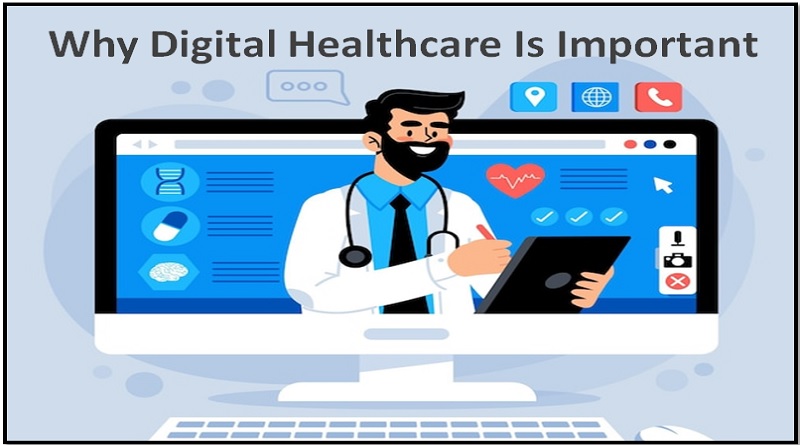Importance Of Digital Healthcare
It goes without saying that the pandemic drastically accelerated the digitization of our life, with the widespread use of teleconferencing in modern society serving as the most glaring example of this trend. But that’s only the very beginning. The rise of digital healthcare is perhaps the most significant change, which is excellent news for all of us. The use of digital tools in medicine has the potential to greatly accelerate the US healthcare system’s progress toward its four goals of better patient outcomes, better patient experiences, better provider experiences, and lower costs.
Telemedicine/Telehealth
More people than ever before now electronically visit their doctor via teleconference technology thanks to the changes brought on by the epidemic, which compelled us to find new, impersonal methods of engaging. For instance, from March 2020 to February 2021, telemedicine connections accounted for 43% of Medicare primary care visits. By the end of 2026, the Fortune Business Insights analysts project that the global telemedicine market will have grown to more than $185 billion.
The appeal of telehealth is clear for the following reasons: In addition to being significantly more convenient than going to the doctor’s office, research indicates that it may occasionally be just as beneficial as in-person meetings.
The following are some advantages of telemedicine.
- Expanded Healthcare Access:
The medically fragile and those without access to transportation can receive the healthcare they require more easily thanks to telehealth.
- A Lessening Of Disease Spread:
Less traffic in medical facilities means fewer chances for patients to spread illness to others.
- More Practical Treatment For Non-Emergency Conditions:
It is simpler for patients with chronic conditions to schedule virtual appointments.
- Care Continuity:
Telemedicine enables continuous communication, which helps doctors get to know their patients better and deliver better care.
“Internet of Things”
The Internet of Things (IoT) in medicine includes wearable devices, such as on-body and implantable devices that can both monitor and treat medical conditions, as well as smartwatches that can measure your vital signs in real time. For instance, on-demand drug release smart bodywear such as patches, clothing, and accessories are now being developed.
IoT medical devices continuously collect patient data, generating insights that could improve treatment regimens. The effectiveness of a particular prescription can be better understood by doctors, and real-time feedback from IoT sensors can help doctors continually improve their initial treatment strategies.
The following are some advantages of internet-connected wearable and implantable medical equipment.
- Patient Liberty:
Patients can continue about their daily activities while using wearable technology. No need to be bound to a bed or make frequent trips to the doctor.
- Better Results
It can be significantly simpler for medical professionals to design, monitor, and modify treatments for maximum effectiveness if they have instantaneous, continuous access to data about patients’ health.
- Lower Prices:
Hospitals can save a lot of money by using IoT sensors on expensive equipment like CAT scanners and MRI machines to warn technicians of developing issues and service problems before they become a problem. Additionally, Moore’s Law predicts that the price of IoT devices will drop significantly in the future, which is good news for patients.
Augmented and virtual reality
Virtual and augmented reality tools, which are now in the development stages, enable medical professionals to train new doctors without risking patients while also securely treating patients with psychological disorders. By simulating real-world situations where people feel psychologically challenged, medical experts utilise virtual reality to treat anxiety, phobias, and post-traumatic stress disorder. This allows patients to learn how to deal with these obstacles without endangering themselves. Medical students can “operate” on virtual patients without running the risk of hurting them thanks to virtual reality situations.
The following are some advantages of virtual and augmented reality in healthcare.
- Better doctors:
Thanks to treating virtual patients while in medical school, tomorrow’s doctors will probably be better knowledgeable and trained more swiftly.
- Improved Mental Health
Virtual reality therapy for phobias and fixations has been shown to help patients reduce their worries by 75% after an average of six weeks of therapy.
The above-mentioned and numerous other digital healthcare tools, including the digital provider directories offered by my company, have the potential to completely transform contemporary medicine. This translates into better outcomes for patients and healthcare professionals, as well as perhaps lower costs for everyone.
The current difficulty is to keep from adopting the previous, pre-pandemic perspective toward these technologies. Any significant change needs a lot of work merely to get past the status quo. I think we can overcome this obstacle and herald in a new era of efficient, effective, and affordable healthcare with the appropriate leadership in the medical, commercial, and governmental arenas.






